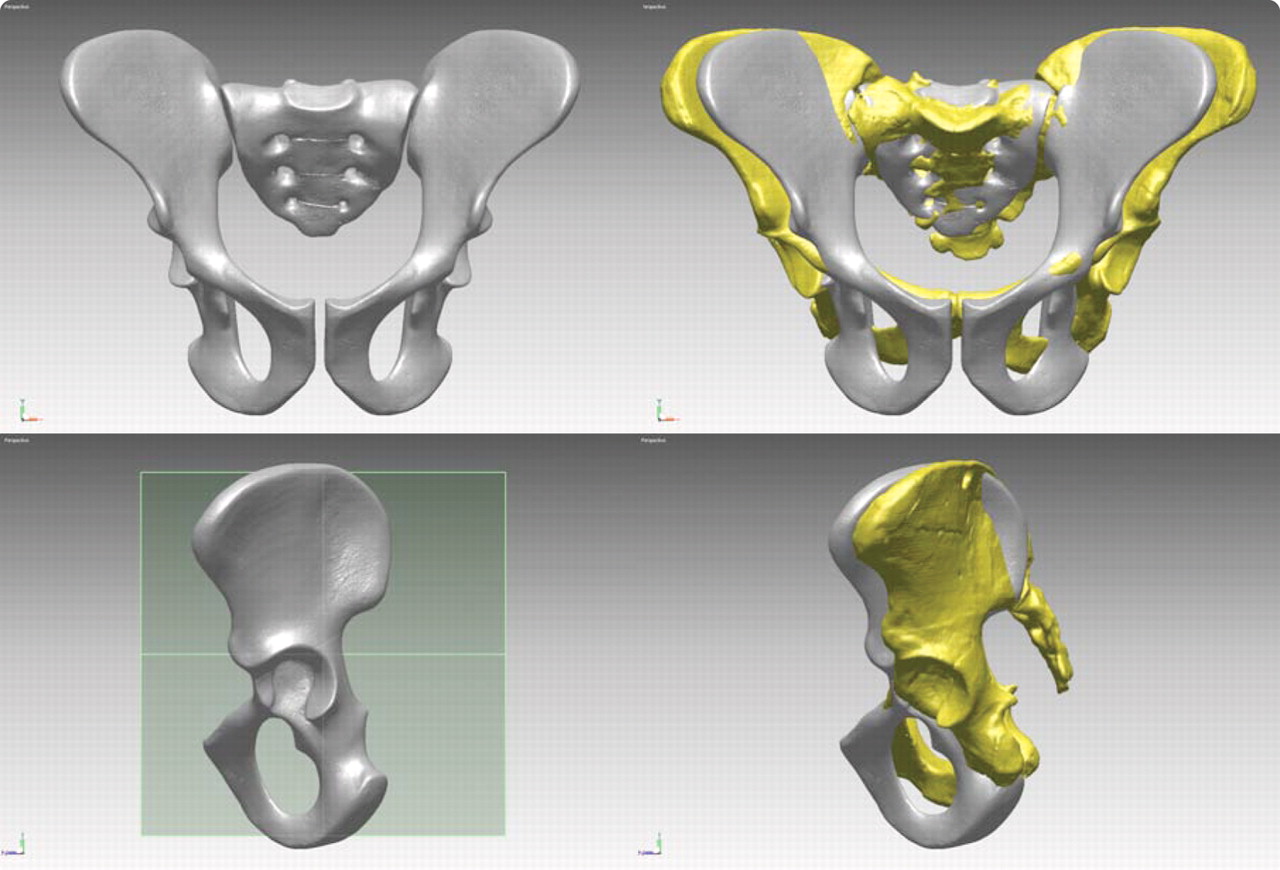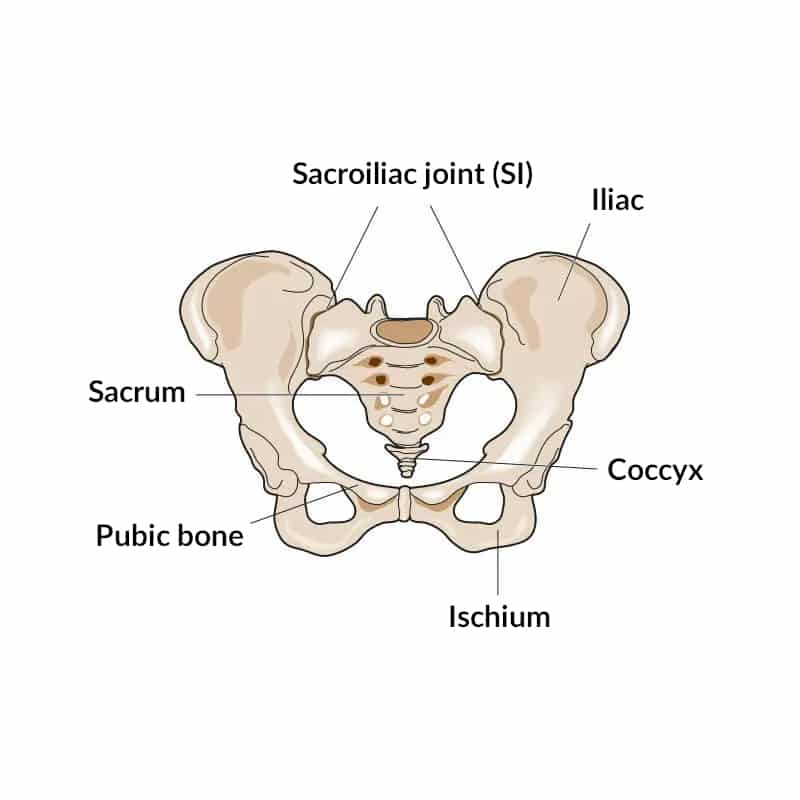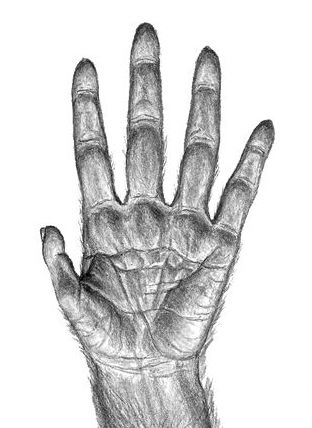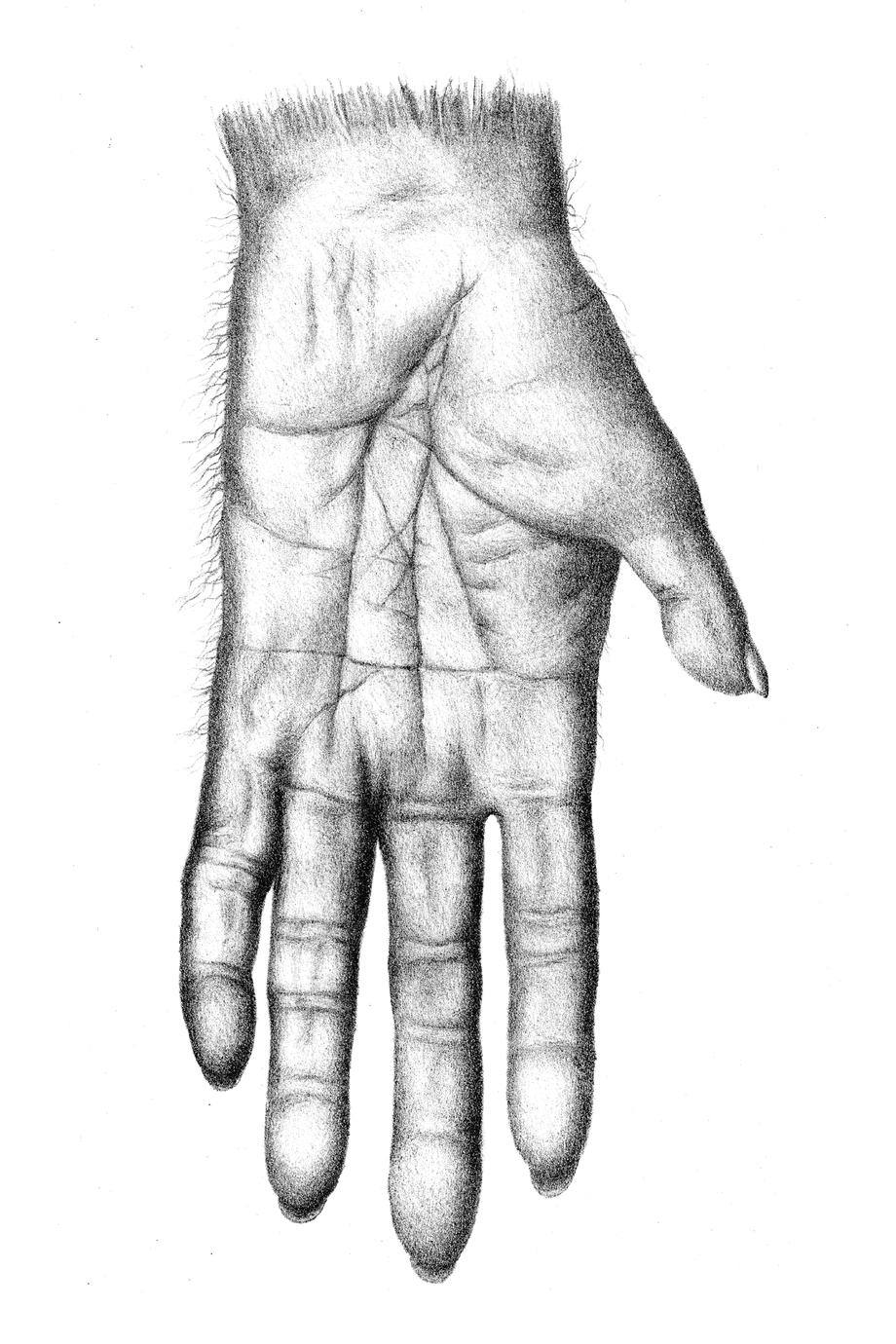Since Ar. ramidus lacks some derived traits found in early hominins, researchers believe that its bipedal traits were acquired shortly after diverging with the last common ancestor with chimpanzees.
The following features are some things that make Ardipithecus ramidus unique.
The pelvis of Ar. ramidus is indicative of natural propensity towards both quadrupedal and bipedal locomotion.

Ardi's pelvis (white) overlaid with Lucy's pelvis (yellow).
Compare the following labeled human pelvis with the 3 hominin pelvises below.

A human pelvis labeled by part.
Homo sapiens (human) pelvis.
Ardipithecus ramidus pelvis.
Australopithecus afarensis (Lucy) pelvis.
In Ar. ramidus, the ilium is wider and shorter, the sacroiliac joint more posterior, and the lower spine more curved. Compared to Lucy’s pelvis, Ardi has a longer lower pelvis and less robusticity.
The trochlear notch on the ulna is more rear-facing than that of other extinct hominins.
In addition to these, Ardi's wrists are more flexible than those of other apes, allowing the flexible palms to grab branches instead of the fingers. The radius of Ar. ramidus does not have features that imply knuckle-walking. Its forarms also lack adaptations seen in other apes supporting vertical climbing and forearm suspension.

Artist rendition of what an Ar. ramidus hand looked like.

Artist rendition of a modern chimpanzee hand.
As mentioned above, the palms were the primary part of the hands that grasped branches while climbing.
The middle part of the hand is more flexible than that of other apes, and more like humans. Ar. ramidus could support its bodyweight on its palms. This adaptation helped it to support its bodyweight in one arm, while grabbing for branches with the other.
Up next: Where Ar. ramidus fits in on the hominin family tree.